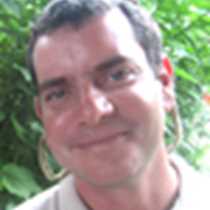Early this morning we headed for the “chin” of the Sea Horse Island, Isabela. This area is known as the most productive in the marine system of the Galápagos. This is the reason we went out early looking for marine mammals commonly seen this time of year. Our patience was rewarded when we spotted several spouts close to our ship that belonged to Minke and Bryde whales, two of the most common whales found in tropical waters. We also spotted seabirds such as Galápagos petrels, Galápagos shearwaters, Eliot’s storm petrels, and even a waved albatross sitting on the ocean.
As we drew close to Punta Vicente Roca, we crossed the equator! Our morning outing here was fantastic. The magnificence of Ecuador’s volcanic scenery combined with Galápagos wildlife was breathtaking. We took a Zodiac ride along the coastline of the volcano and saw Pacific green sea turtles, Galápagos penguins, flightless cormorants, a common noddy, blue-footed boobies, Nazca boobies, Galápagos fur sea lions, and Galápagos sea lions. Just before we returned to the ship, we saw a common noddy feeding with Galápagos penguins—what an encounter! Later on, we went snorkeling and saw so many turtles that we stopped counting.
In the afternoon, we visited the youngest island in the Galápagos, Fernandina Island. The best preserved island in the archipelago, it is a favorite with naturalists. When we approached the visitors’ site at Punta Espinoza, there did not seem to be many signs of life. But as we got closer, we saw so many marine iguanas that we felt the place should be called Iguana Land. Fernandina has the highest concentration of iguanas of any visitors’ site in the Galápagos.
As we explored the spectacular coast of Punta Espinoza, we enjoyed walking over black lava as much as we loved looking at the wildlife we encountered. The afternoon’s highlights: a Galápagos hawk feeding on a marine iguana and flightless cormorants taking care of their newborn chicks. Our day ended with an incredible sunset!









